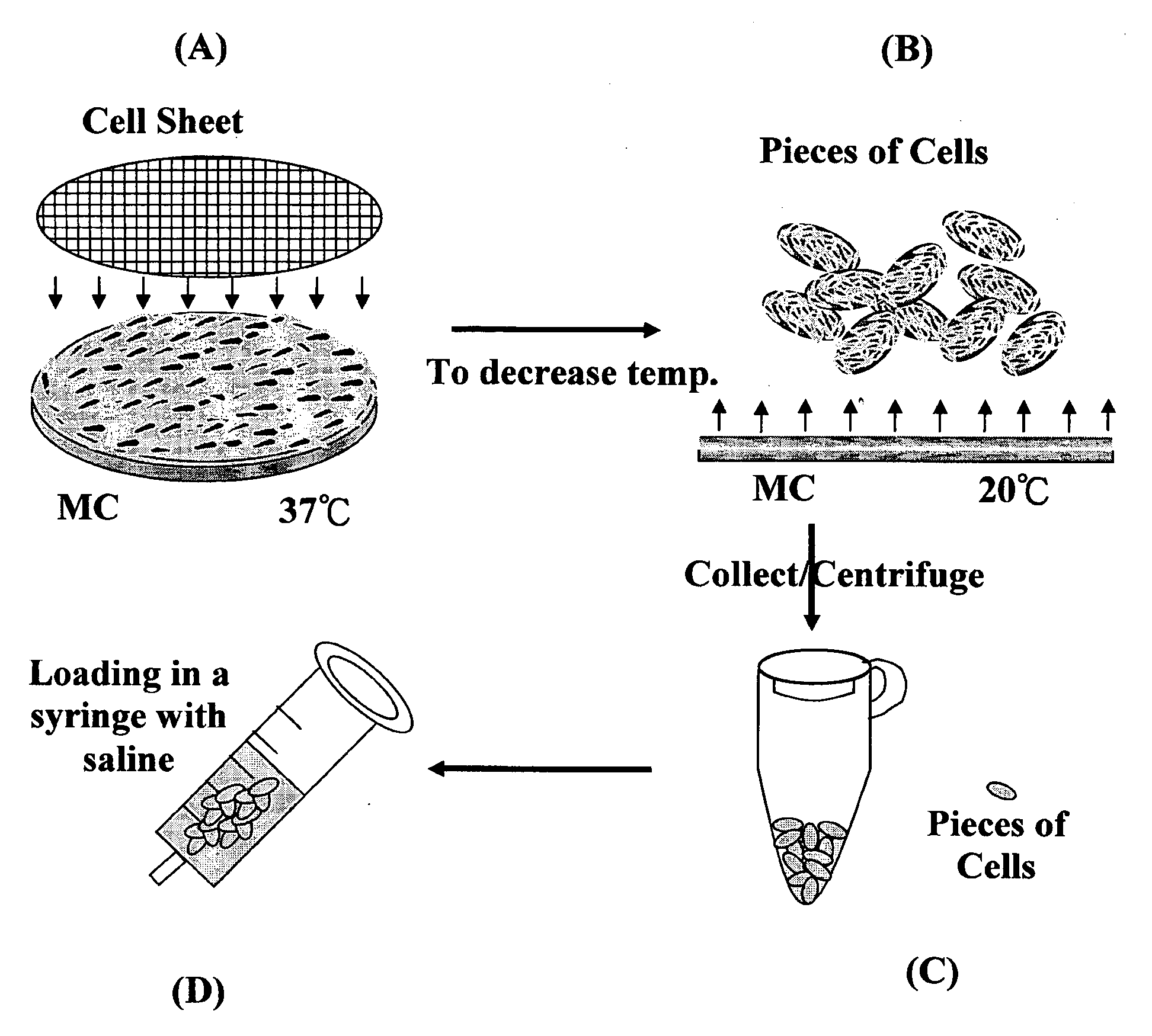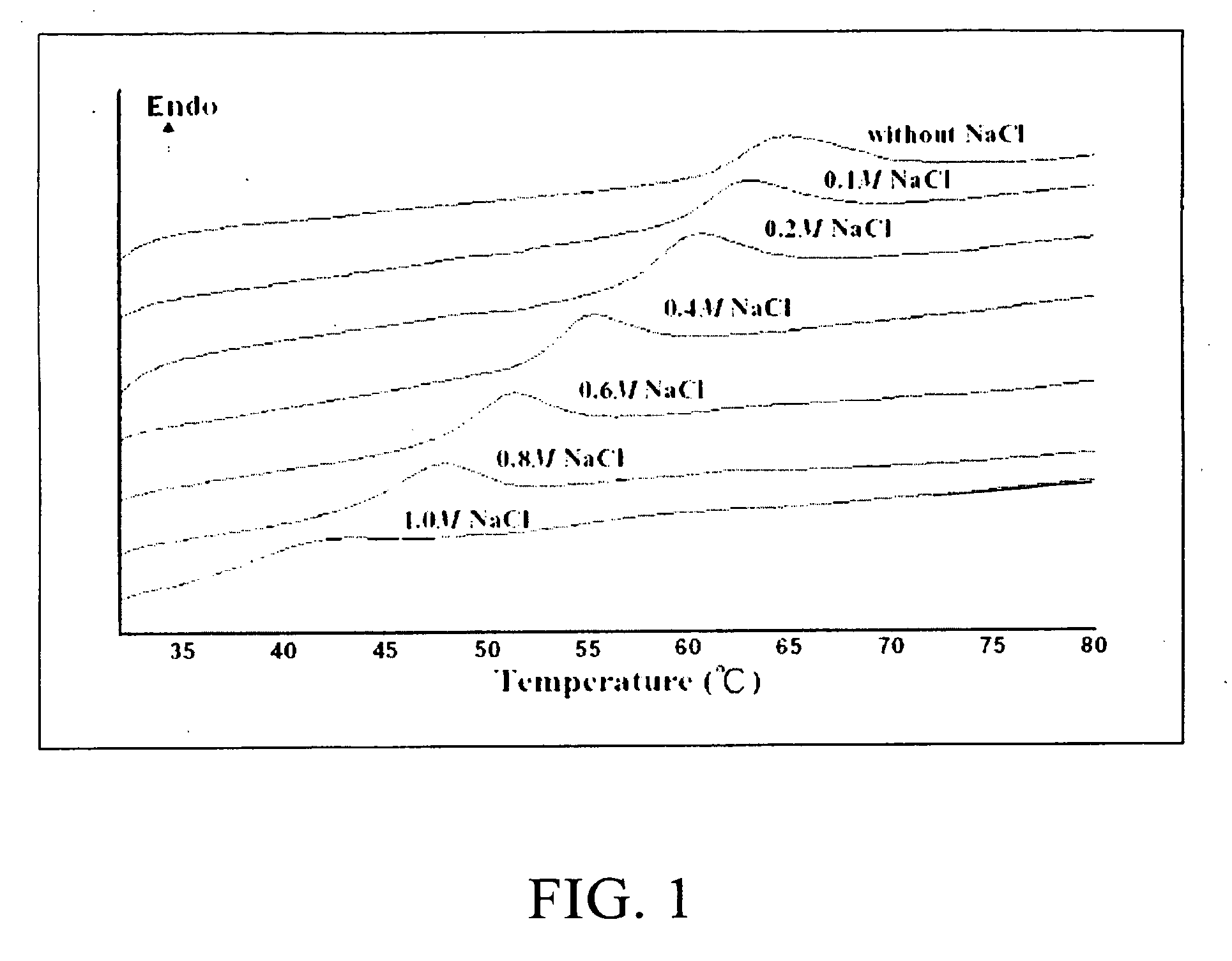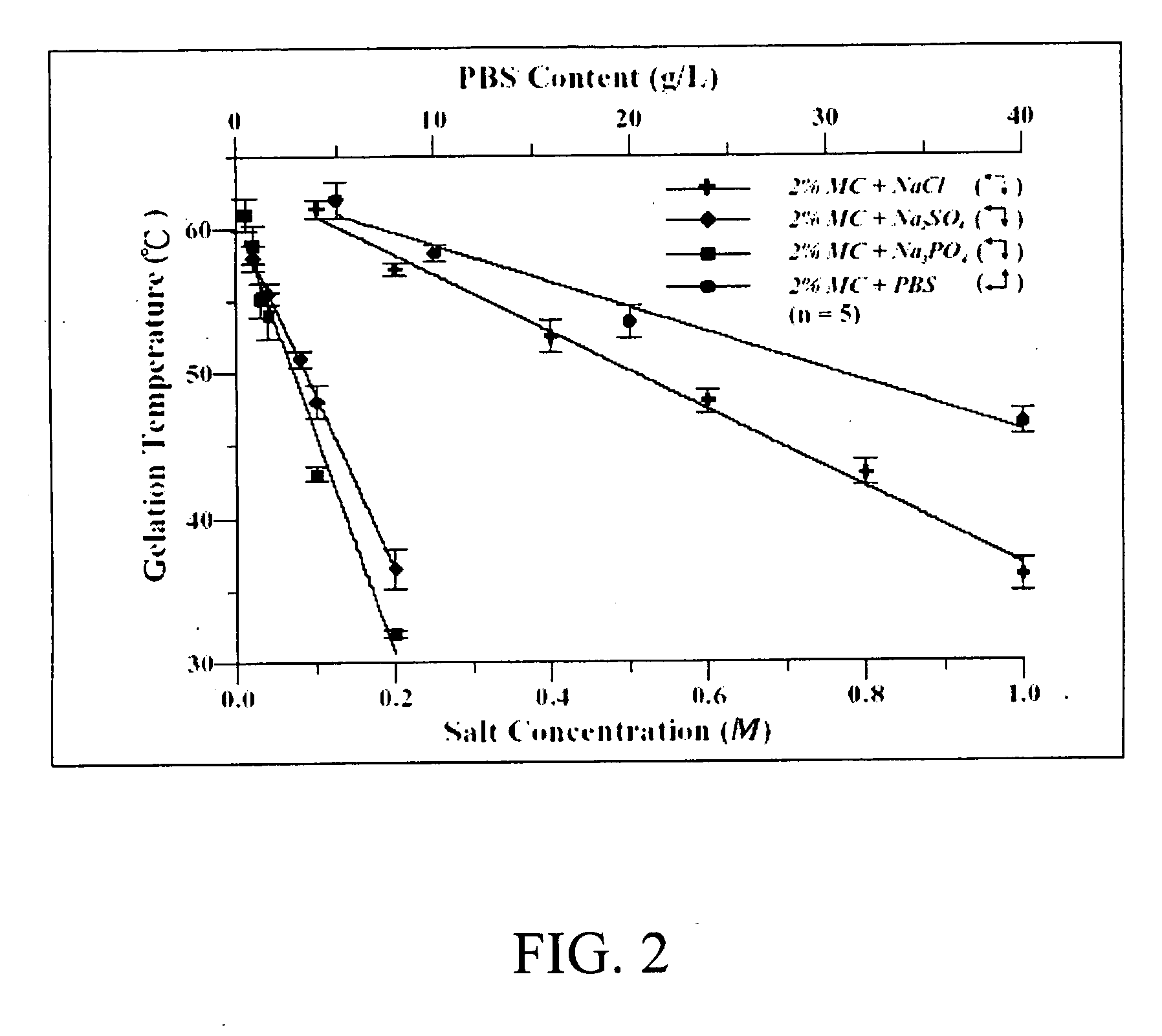Medical device and methods for living cell injection
a technology of living cells and medical devices, which is applied in the field of living cell packets, can solve the problems of low cell number remaining in place, myocardial infarction, cell leakage from the implanted site,
- Summary
- Abstract
- Description
- Claims
- Application Information
AI Technical Summary
Benefits of technology
Problems solved by technology
Method used
Image
Examples
example no.1
Example No. 1
Gelation of Aqueous MC Solutions
[0069]Commercial MC is a heterogeneous polymer consisting of highly substituted zones (hydrophobic zones) and less substituted ones (hydrophilic zones). Aqueous MC solutions undergo a sol-gel reversible transition upon heating or cooling. In the solution state at lower temperatures, MC molecules are hydrated and there is little polymer-polymer interaction other than simple entanglements. As temperature is increased, aqueous MC solutions absorb energy (the endothermic peaks observed in the differential scanning calorimeter, DSC, thermograms discussed later) and gradually lose their water of hydration. Eventually, a polymer-polymer association takes place, due to hydrophobic interactions, causing cloudiness in solution and subsequently forming an infinite gel-network structure (Carbohydr. Polym. 1995; 27:177).
[0070]The temperature in forming this gel-network structure, at which the aqueous MC solution does not flow upon inversion of its con...
example no.2
Example No. 2
Preparation of Aqueous MC Solutions
[0072]MC (with a viscosity of 3,000-5,500 cps for a 2% by w / v aqueous solution at 20° C.) was obtained from Fluka (64630 Methocel® MC, Buchs, Switzerland). Aqueous MC solutions in different concentrations (1%, 2%, 3%, or 4% by w / v) were prepared by dispersing the weighed MC powders in heated water with the addition of distinct salts (NaCl, Na2SO4, Na3PO4) or in phosphate buffered saline (PBS) in varying concentrations at 50° C. The osmolalities of the prepared aqueous MC solutions were then measured using an osmometer (Model 3300, Advanced Instruments, Inc., Norwood, Mass., USA).
example no.3
Example No. 3
Gelation Temperatures of Agueous MC Solutions
[0073]The physical gelation phenomena of aqueous MC solutions with temperature were visually observed and measured by a DSC (Pyris Diamond, Perkin Elmer, Shelton, Conn., USA). Aqueous MC solutions blended with distinct salts (2 ml samples) were exposed to elevating temperatures via a standard hot-water bath. Behavior was recorded at intervals of approximately 0.5° C. over the range of 20-70° C. The heating rate between measurements was approximately 0.5° C. / min. At each temperature interval, the solutions / gels were allowed to equilibrate for 30 min. A “gel” criterion was defined as the temperature at which the solution did not flow upon inversion of the container. A DSC was used to determine the transition temperatures of the prepared aqueous MC solutions heating from 20 to 90° C. A heating rate of 10° C. / min was used for all test samples.
PUM
| Property | Measurement | Unit |
|---|---|---|
| Volume | aaaaa | aaaaa |
| Mass | aaaaa | aaaaa |
| Mass | aaaaa | aaaaa |
Abstract
Description
Claims
Application Information
 Login to View More
Login to View More - R&D
- Intellectual Property
- Life Sciences
- Materials
- Tech Scout
- Unparalleled Data Quality
- Higher Quality Content
- 60% Fewer Hallucinations
Browse by: Latest US Patents, China's latest patents, Technical Efficacy Thesaurus, Application Domain, Technology Topic, Popular Technical Reports.
© 2025 PatSnap. All rights reserved.Legal|Privacy policy|Modern Slavery Act Transparency Statement|Sitemap|About US| Contact US: help@patsnap.com



